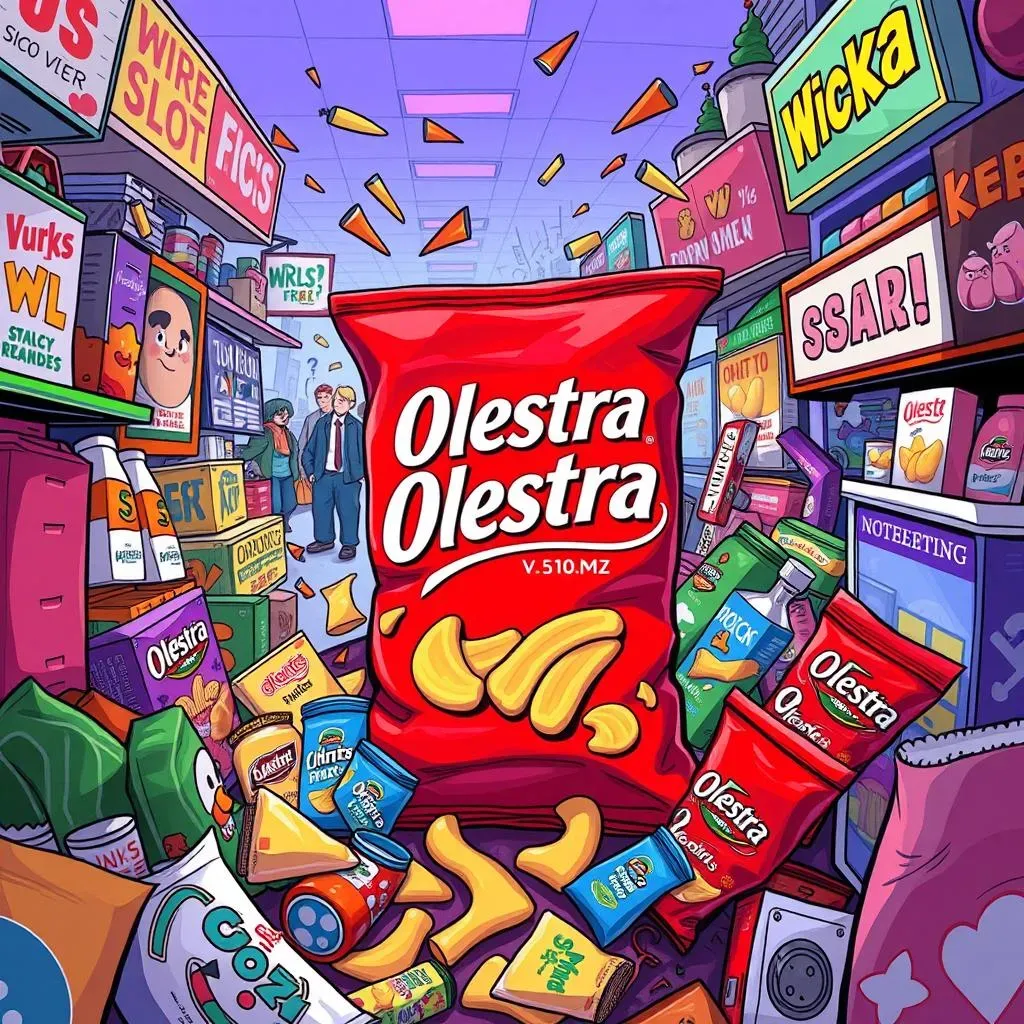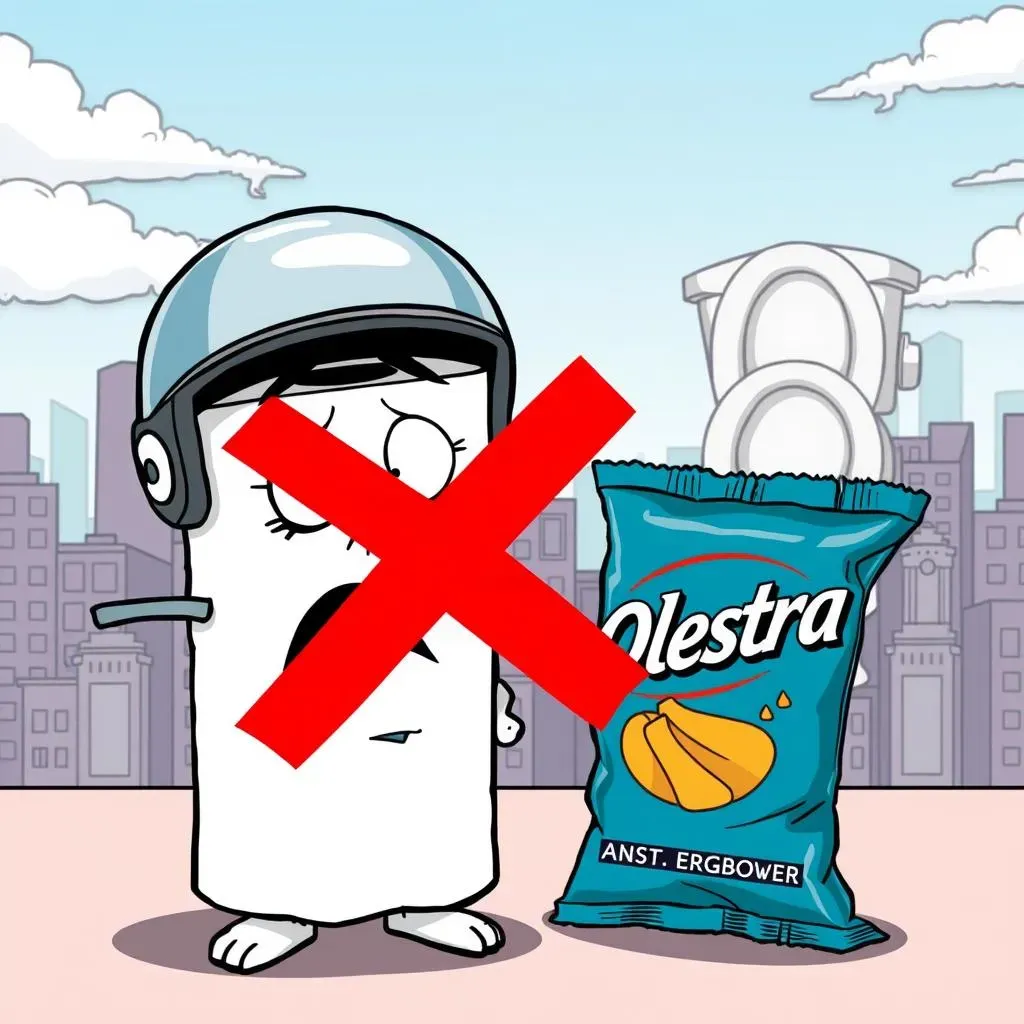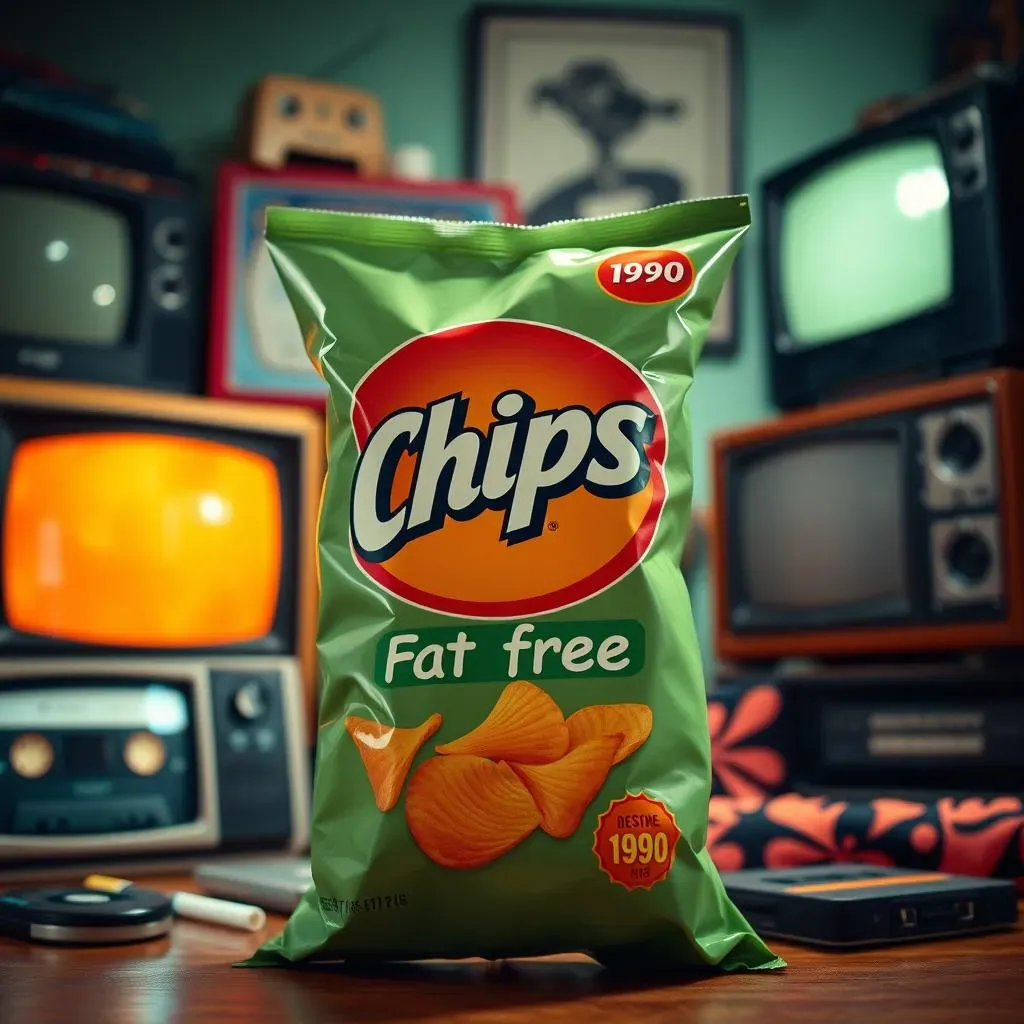Table of Contents
Remember the 1990s? Big hair, grunge music, and...fat-free chips? That's right, the decade of dial-up internet and questionable fashion choices also brought us a snack revolution (or was it a revolution of the bowels?). This article takes a nostalgic, yet slightly queasy, trip back to the era of "fat-free" everything, focusing specifically on those infamous fat-free chips of the 90s. We’ll explore the science (or lack thereof) behind the miracle fat substitute, Olestra, and the marketing blitz that promised guilt-free snacking. Prepare for a rollercoaster ride through a time when the pursuit of low-fat led to some truly unexpected consequences. We'll uncover the truth behind the hype, the surprising side effects, and the ultimate downfall of this once-popular, yet ultimately controversial, snack. Get ready to relive the glory (and the gastrointestinal distress) of the fat-free chips craze of the 90s!
Olestra: The Miracle Fat Substitute (That Wasn't)

Olestra: The Miracle Fat Substitute (That Wasn't)
The Promise of Fat-Free
Picture this: It's the 1990s. Low-fat diets are all the rage. Everyone's obsessed with shedding those extra pounds. Enter Olestra, a brand-new fat substitute, promising all the deliciousness of regular chips without the guilt. It sounded like a dream come true, right? Companies like Procter & Gamble, the brains behind Olestra, were ready to make a killing. They poured millions into developing this seemingly magical ingredient, and soon, shelves were overflowing with "fat-free" versions of our favorite snacks. Lay's Wow! chips, for example, were a big hit – for a while. But there was a catch, a rather significant one.
Olestra wasn't absorbed by the body, meaning zero calories. Sounds fantastic, especially when paired with a low-fat chips recipe that's actually tasty. The problem? Olestra didn't play nice with our digestive systems. It's a complex molecule that essentially acted like a laxative, often leading to…well, let's just say, unpleasant side effects. This wasn't just a minor tummy ache; we're talking full-blown gastrointestinal distress.
Snack | Olestra? | Result |
|---|---|---|
Lay's Wow! Chips | Yes | Initial success, then digestive issues |
Pringles (Fat-Free) | Yes | Similar issues to Lay's Wow! |
The Science Behind the Mess
So, what exactly *was* Olestra? It's a sucrose polyester, meaning it's made from sugar and fatty acids. The structure is such that our bodies can't break it down and absorb it. This is where the "zero-calorie" claim came from. However, this indigestible nature is precisely what caused all the digestive havoc. Olestra can also interfere with the absorption of fat-soluble vitamins, which is why many Olestra-containing products had to be fortified. It’s a bit like trying to eat a plastic bag – your body won't digest it, and you might feel pretty awful afterwards.
The FDA did approve Olestra for use in savory snacks. However, they also mandated a warning label about potential side effects. This was a pretty big deal – it was one of the first times a warning label of this kind was required for a food additive. But even with the warning, many consumers experienced those unpleasant side effects firsthand, leading to a significant decline in sales. You could even check out this article on are reduced-fat chips healthy? to compare Olestra to other low-fat options.
- Olestra is a sucrose polyester.
- It's not absorbed by the body.
- It can cause digestive problems.
- It can interfere with vitamin absorption.
The Marketing Mayhem: Selling a Questionable Snack

The Marketing Mayhem: Selling a Questionable Snack
The Hype Machine
With Olestra in hand, the marketing machine went into overdrive. Forget subtle advertising; this was a full-blown assault on our senses. Television commercials showcased happy families munching on fat-free chips, their smiles as wide as the newly opened bag of snacks. The message was clear: you could indulge without the guilt. It was a marketer's dream – a product that seemingly ticked all the boxes: delicious, convenient, and…well, technically fat-free. But the reality was far more complicated, as many soon found out.
The sheer volume of advertising was impressive. Every magazine, newspaper, and billboard seemed to be shouting about the "miracle" of Olestra. Pringles, Lay's, and other major brands jumped on the bandwagon, creating a whole new line of "fat-free" products. It felt like a cultural phenomenon, a collective delusion fueled by the desire for a guilt-free snack. Looking back, it's a fascinating (and slightly disturbing) example of how effective marketing can overshadow important details, even potential health risks. Want to know more about other low-fat options? Check out our guide on best low-fat chips.
- Massive TV ad campaigns
- Print ads in every magazine
- Billboards across the country
- Major brand endorsements
Ignoring the Warning Signs
Despite the FDA’s mandatory warning label about potential digestive issues, many companies seemed to downplay the risks. The focus remained squarely on the "fat-free" aspect, often overshadowing the potential for stomach cramps, diarrhea, and other unpleasant side effects. This strategy, while undeniably successful in the short term, ultimately contributed to the downfall of Olestra. It's a cautionary tale about the ethics of marketing, especially when it comes to potentially harmful products. Think about how many people might have avoided these chips if the side effects had been more prominently featured.
Perhaps the most telling aspect of the marketing strategy was the emphasis on "fat-free" as a solution to all weight-related woes. It played into the prevailing cultural obsession with thinness and dieting. The message was simple: eat all the chips you want, and you won't gain weight! This narrative completely disregarded the potential health consequences, leading many consumers to overlook the warnings. This oversimplification of a complex issue is a common pitfall in marketing, and the Olestra saga serves as a prime example. For a healthier alternative, consider these low-calorie chips for dipping.
Marketing Tactic | Effectiveness | Long-Term Impact |
|---|---|---|
Emphasis on "fat-free" | Highly effective initially | Led to consumer disappointment and distrust |
Downplaying side effects | Short-term success | Damaged brand reputation |
The Aftermath: Lessons Learned (and Stomachs Upset)

The Aftermath: Lessons Learned (and Stomachs Upset)
The Great Olestra Crash
The initial success of Olestra-based snacks was short-lived. Reports of digestive distress flooded in. The promised land of guilt-free snacking turned into a battlefield of stomach cramps and, let's be honest, explosive bowel movements. The once-celebrated fat substitute became synonymous with bathroom emergencies. Sales plummeted, and the "miracle" ingredient quickly lost its luster. It went from being a revolutionary snack to a cautionary tale almost overnight.
Companies scrambled to adjust their marketing strategies, but the damage was done. Consumer trust had been broken. The once-ubiquitous fat-free chips vanished from shelves, replaced by products with more conventional (and less disruptive) ingredients. The Olestra saga serves as a stark reminder that even the most innovative products can fail if they don't prioritize consumer safety and well-being. For a look at safer, low-fat alternatives, check out our article on low-fat chips or crackers.
- Sales plummeted after reports of digestive issues.
- Consumer trust was severely damaged.
- Olestra-based products largely disappeared from the market.
- The episode highlighted the importance of consumer safety.
A Legacy of Digestive Discomfort
While Olestra may be largely forgotten today, its legacy continues to serve as a cautionary tale. It highlights the dangers of prioritizing profit over consumer health, and the importance of thorough testing and honest marketing. The experience also sparked a renewed focus on the potential risks associated with food additives and the need for stricter regulations. The story of Olestra is a reminder that "miracle" products often come with unexpected consequences.
The Olestra debacle also had a lasting impact on the food industry. It forced manufacturers to be more transparent about their ingredients and potential side effects. Regulations regarding food additives became stricter, and companies became more cautious about launching products with potentially controversial ingredients. The 90s obsession with low-fat everything certainly left its mark, and the Olestra-related digestive distress is a part of that legacy. If you're looking for a tasty and healthy snack, why not try our low-fat kettle chips recipe?
Long-Term Impact | Description |
|---|---|
Increased transparency | Companies became more open about ingredients and potential risks. |
Stricter regulations | Government oversight of food additives increased. |
Consumer awareness | Consumers became more discerning about food products. |
Beyond Olestra: The Legacy of LowFat Cravings

Beyond Olestra: The Legacy of LowFat Cravings
The Low-Fat Lie
Olestra's failure didn't end the low-fat craze. Oh no, that desire for guilt-free indulgence continued, fueled by decades of diet culture. The 90s saw a flood of "low-fat" products, many of which compensated for the lack of fat by adding extra sugar. This led to a curious paradox: people were eating "healthier" foods, but often consuming more calories and less nutritional value. It was a clever marketing trick, and it worked, at least for a while. The pursuit of thinness often trumped the pursuit of actual health. This is why many people felt like they were eating healthy, despite gaining weight.
Think about those SnackWell's devil's food cookies – a staple in many 90s pantries. Low-fat, yes, but also packed with sugar. It was a trade-off that many were willing to make. The desire for a tasty treat outweighed concerns about the overall nutritional value. This highlights a deeper issue within the food industry: the tendency to focus on single aspects (like fat content) while ignoring the bigger picture of overall health. For more on healthier low-fat options, check out our article on low-fat chocolate chip cookies.
- Increased sugar in "low-fat" products
- Focus on a single nutrient (fat) over overall health
- Marketing strategies that prioritized sales over nutrition
The Lingering Effects
The legacy of the 90s low-fat obsession extends beyond Olestra. It contributed to a culture of restrictive dieting and an unhealthy focus on weight loss. The emphasis on "fat-free" often led to a fear of fats, which are actually essential nutrients for our bodies. This misconception continues to affect our dietary choices today. Many people still avoid healthy fats, leading to nutritional imbalances and potentially impacting overall health. We often neglect the importance of balanced nutrition and whole foods.
The emphasis on single-nutrient reduction (low-fat, low-carb, etc.) often ignores the complex interplay of nutrients in a balanced diet. This oversimplified approach to nutrition can be counterproductive, leading to nutritional deficiencies and potentially impacting long-term health. For a more balanced approach to healthy snacking, explore our suggestions for low-calorie chips and crackers.
Long-term Effect | Description |
|---|---|
Fear of healthy fats | Misunderstanding of the role of fats in a balanced diet. |
Restrictive dieting | Focus on weight loss over overall health. |
Nutritional imbalances | Deficiencies due to overly restrictive diets. |
